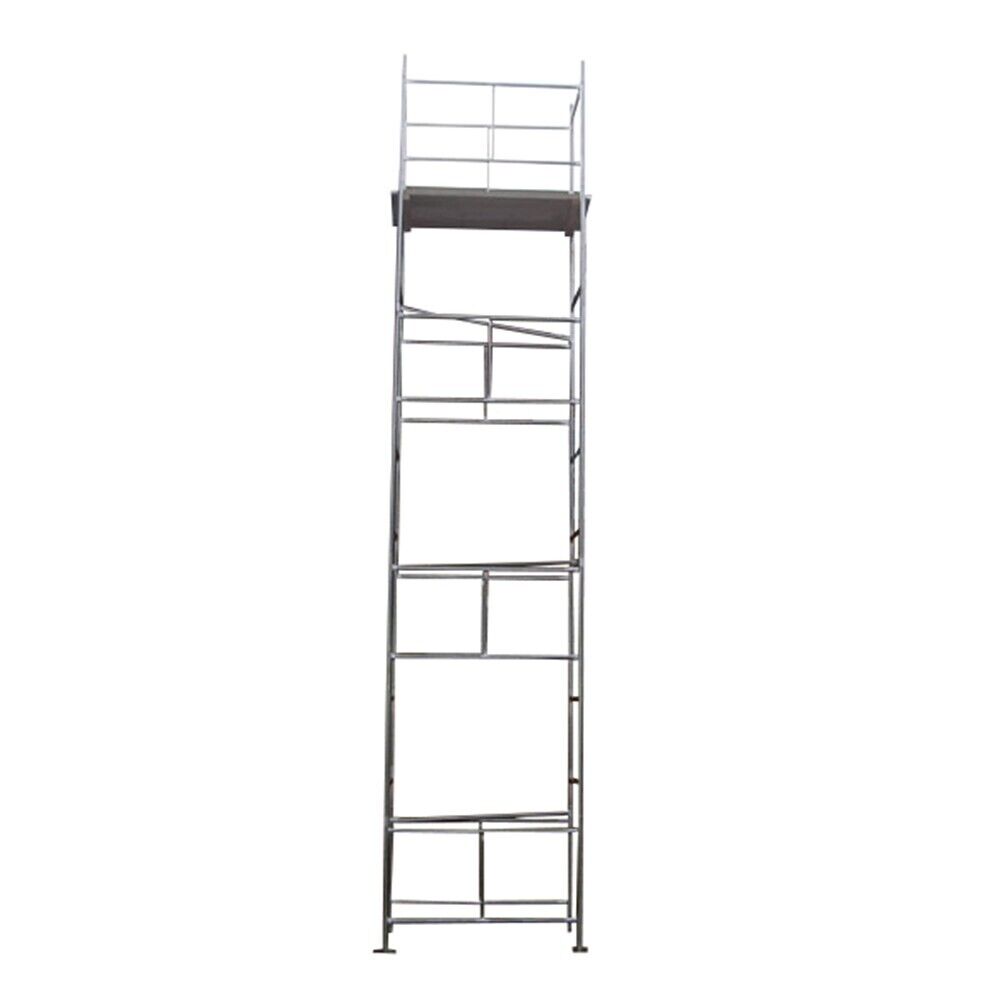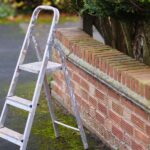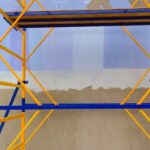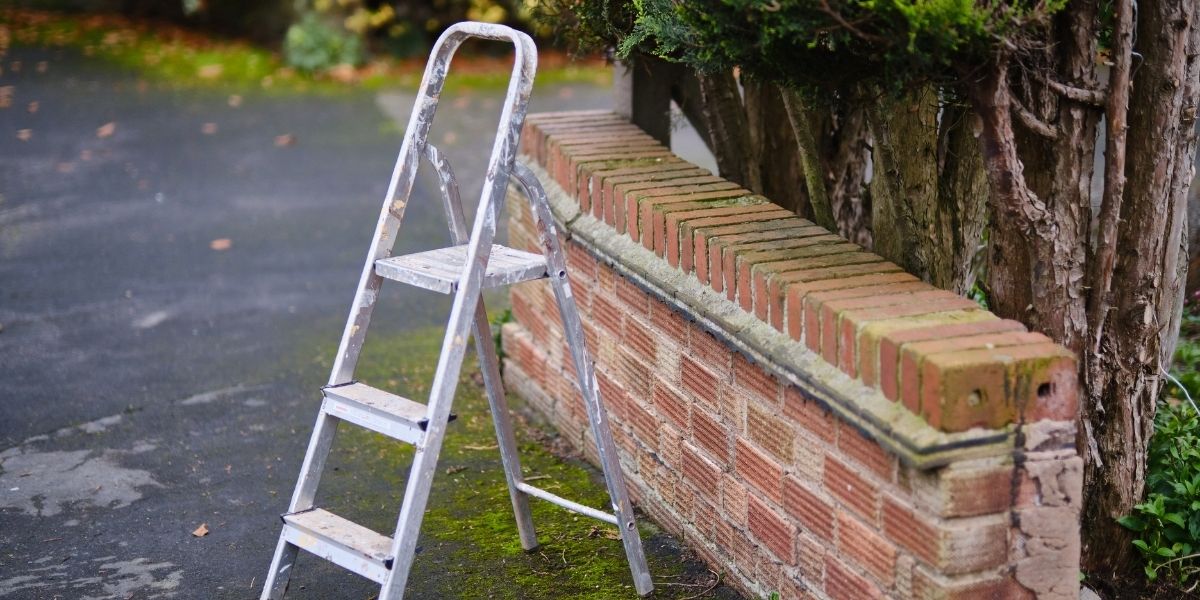What is a steel scaffold tower?

A steel scaffold is an access solution that is made up from a collection of components that is erected by the user.
Being made from steel, the components comprise of framed side sections, diagonal bracing and timber board sections.
They are used to carry out tasks at height where a ladder would be impractical or indeed dangerous to use.
Steel scaffold towers differ from their aluminium type cousins by their obvious difference in manufacturing material and by the way they are physically erected.
Steel towers usually are ‘slotted’ together where slightly widened tubes on the bottom section slot into the more narrow top sections to act like a spigot joint.
Diagonal cross member sections are introduced internally within the tower structure to reduce or minimise any instability.
Short timber purpose made scaffold boards are then used to provide the working platform at the desired height. The scaffold boards will usually have additional timber battens underneath them.
These are to lock the boards into the side frame and stop them moving or sliding off. They drop over and into the frame.
Steel scaffold towers are a lot simpler than aluminium towers and consequently can be much more competitively priced.
Aluminium towers provide access through the middle of the tower via a ladder formed into the frame and up through a hinged trap door in the platform decks.
Steel scaffold towers tend not to have this option and generally access is via a ladder leant up to tower and tied off at high level so it doesn’t slip.
The timber scaffold boards are the full width and depth of the tower so there also aren’t any trap doors to climb through.
Extra care must be taken when exiting the ladder and climbing onto the steel tower. There are also many reasons when a steel tower is not ideal and a Fibreglass or GRP tower is a better option, especially when working with electrical tasks.
You can further read our article on Fibreglass and GRP towers here.
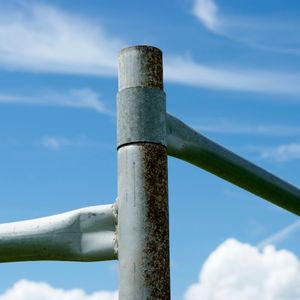
Steel scaffold towers also tend to be a lot smaller than an aluminium tower.
Users of these types of towers like this because they very often can be transported in a family sized car with the rear seats folded down.
By their nature, they are heavier than aluminium towers but can be as strong or even stronger.
Because of them being made from steel, they are more susceptible to rust.
Especially if stored outside or typically near coastal areas where moisture or water can contain salt. For that reason, most, if not all will be a Galvanised scaffold tower.
A galvanised scaffold tower made steel will have a Zinc coating added to it. This will provide protection from the steel rusting.
The Zinc coating is sacrificial so when damaged, it can self repair as long as there is enough Zinc surrounding the damage. If not, rusting will start.
In general, the greater the diameter of the steel tube, the more sturdy the tower will be so always look for one with this feature. Also look for the availability of additional safety features like stabiliser legs for the corners.
These will dramatically increase the footprint of the tower and provide much improved stability.
A purpose made trap door within the scaffold would also be a great feature which would mean that access could be from the footprint of the tower which is much safer.
Clip on toe boards that are placed around the working platform will also avoid any materials or tools being kicked off the working platform and onto someone.
This accessory can avoid expensive tools being damaged or worse, injury to someone below.
So, to recap, a steel tower can provide the benefits of being very strong, easy to erect, smaller and easier transport and competitively priced. The only drawbacks are that because being made from steel, they can be heavier.
Although being technically easier to erect, it may be necessary to use the help of someone else. They are also susceptible to rust if not looked after.
Can anyone build a scaffold tower?
This is a common question and it depends if your are erecting a scaffold tower in a domestic environment or a construction site environment.
In a construction site environment, any access tower must be erected by a trained, competent person. This person will also hold a card to prove that he or she has been trained and met the skills needed to erect a tower correctly.
This is vital if another person is to be using it and in a construction site situation, the operative erecting the scaffold tower would need to be PASMA trained.
You can read more about what’s involved in our article on Pasma training here.
In a domestic situation, you do not need any training to erect a tower and the reality is that most users will not undertake any training. In these cases, a basic knowledge of tower safety can only be a good thing.
A good place to start are the manufacturers instructions or guidelines.
These will usually tell you the maximum loadings of the tower and give clear instructions how to erect it. Personal safety is vitally important so it’s best not to cut corners or be in rush to complete a task at height.
Steel scaffold tower suggestion
Classic 7.2m DIY Galvanised Scaffold Tower (4′ x 2’6″ Base)
What we like:
Galvanised with 10 year guarantee
Now includes additional base rails as standard
Base plates supplied as standard
Optional extras are available
What could be better:
Caster wheeled feet available only as an extra
This tower has a rectangular type foot print, not a square footprint. It measures 4 feet by 2 feet 6 inches and comes with a set of platform scaffold boards as standard.
This particular steel tower has a working height of 23 feet 6 inches or 7.2 metres. With the last frame providing the guardrail, the platform has a height of 17 feet or 5.2 metres.
The platform height is measured from the ground to where you stand. This tower has a good selection of optional accessories so you can tailor make your tower to your exact requirements.
The four base plates are adjustable so can be easily adjusted on uneven ground. The castors or wheels are an optional extra but make for easy movement on flat surfaces.
What we particularly liked about this tower was that the accessory list includes stabiliser legs, internal ladders, trapdoor platforms and a tower standoff.
This tower can solve almost any access problem whether its gutter cleaning, internal or external decorating, hedge and tree trimming and all general maintenance.
Manufactured from high quality pre-galvanised steel, it provides excellent resistance to corrosion which increases its lifespan. Read our article on how to clean gutters here!
Top Tower are so confident about their manufacturing quality that all of the welds on their towers carry a lifetime guarantee (conditions apply).
The sections and components are lightweight but engineered to be extremely strong, hard wearing and easy to assemble. With a handrail all around the working platform, towers offer a much safer alternative to ladders or steps.
Other towers are also available in four useful base sizes – 4′ x 2’6″, 4′ x 4′, 6′ x 2’6, and 6′ x 4′ and a variety of heights.
Final thoughts
Steel scaffold towers are a very useful access solution where a ladder is not practical or safe to use due to the nature of the task.
Steel scaffold towers can also be used in very confined spaces such as stairwells. With adjustable feet, they be levelled easily on steps.
Steel scaffold towers also provide additional safety and support when working at greater heights.
As steel scaffold towers come in different sizes and shapes, there will always be the correct steel scaffold tower for any job and they can support up quite large loads.
The light weight steel material makes steel scaffold towers easy to transport with most models able to be dismantled and packed into a reasonably sized car.
The main feature of steel scaffold towers though has got to be the price.
Steel scaffold towers are very competitively priced with almost all steel scaffold tower manufacturers able to offer steel scaffold towers at a fraction of the price you would expect for aluminium equipment.
Read our article on steel scaffold towers here.


